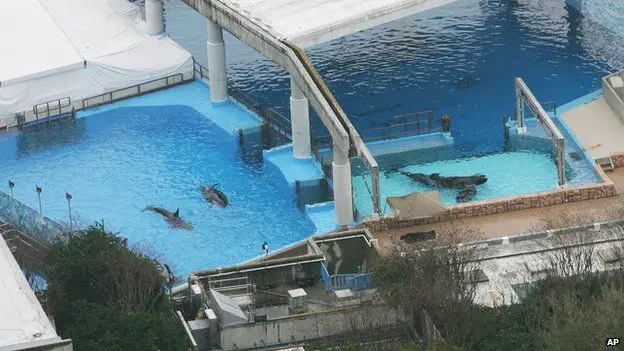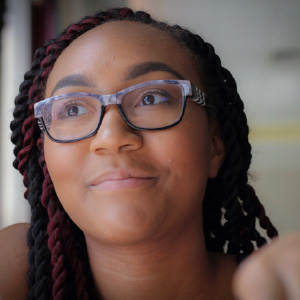A coworker encouraged me to watch “Blackfish” on Netflix last summer to occupy some lag time while at work. At the time, I was in the process of transitioning from loose vegetarianism to veganism and working toward eliminating my use of makeup that was tested on animals. This was a decision made solely for the sake of my health originally, but once I finished watching the eighty-minute documentary, I was further convinced that animal cruelty awareness was a necessity.
The story of Tilikum and Dawn Brancheau left me feeling an assortment of emotions, which included sadness, anger and confusion. I was sad because, according to the Whales and Dolphin Conservation, 156 orcas have been taken from their homes in the wild and forced into captivity, stunting their lifespan significantly. Whereas male and female orcas in the wild live, respectively, for thirty and fifty years on average, in captivity, nearly 50 percent of the animals die by the average age of six globally, and twelve here in the U.S.
I was confused because SeaWorld seems to articulate statistics contrary to this. They say on their website, “When factored in at birth, the average life expectancy of southern and northern resident killer whales is about 29 years for females and 17 years for males.” Below this statistic they allude to the statistics often found on the sites of conservations and animal rights administrations, but claim them to be true only “if a killer whale survives the first six months.”
And I was angry because of the way animals are exploited, not just at the hands of SeaWorld, but for the sake of human entertainment. What really blew me away, though, was that even the deaths of the trainers, which could jeopardize the profit of organizations like SeaWorld, get shoved under the rug.

Incidentally, since the release of the documentary, in 2013, SeaWorld stock values have dipped in price, and what was once a $2 billion industry is now staring its potential demise in the face, as attendance has plunged by 14.9 percent since 2013, according to “USA Today.”
The public is increasingly abstaining from entertainment that comes at the price of animal lives, which would explain why, after 146 years of prosperity, the Ringling Bros. and Barnum & Bailey circus took its final bow this past May.
Thankfully, as of March this year, SeaWorld San Diego announced the end of orca shows and the beginning of a transition to a more “educational” use of the orcas that would incorporate back drops of their natural habitats. They are using the term “animal conservation.”
Shows aren’t expected to cease in the Florida and Texas locations until 2019, but SeaWorld is now experiencing searing pressure from the public and activist groups following the recent death of three-month-old Kyara, the final orca born into captivity. Coincidentally, Kyara passed on #BoycottSeaWorld day.
Kyara, the daughter and fifth calf of Takara, who is the oldest orca at SeaWorld San Antonio, passed on the morning of July 24, 2017, of bacterial pneumonia, which is the most common cause of death in captive whales. The infamous Tilikum also died from bacterial pneumonia back in January of this year.
Kyara was conceived through natural breeding before SeaWorld announced in 2016 that they would no longer breed orcas in response to “Blackfish” and disapproval from the public. The gestation period for orcas usually lasts about ten to eighteen months; Kyara was born this last April.
Upon her birth, People for the Ethical Treatment of Animals (PETA) requested SeaWorld move Kyara and Takara to an animal sanctuary, but SeaWorld declined with claims that Kyara’s birth would be the last chance for researchers to study orca development as a means to “conserve this amazing species.”
(Looks like they missed out on their chance regardless.)
What interested me most about the announcement of Kyara’s death was how similar the wording read when compared to the statement SeaWorld released following Tilikum’s death earlier in the year.
“Tilikum passed away early this morning surrounded by the trainers, care staff and veterinarians that provided him around-the-clock world-class care.”
“Kyara passed away early today, July 24, surrounded by the dedicated SeaWorld staff that not only cared for her for the last several months” (she lived for all of three months…) “as well as the staff that fought tirelessly to save her life over the last several days.”
The statements aren’t identical, but I interpret them to both say something along the lines of: “These whales were taken care of, we truly love them and their passing is unfortunate, but we can’t put the remainder in sanctuaries because their pain is our profit.”
I don’t doubt that SeaWorld staff and trainers love their orcas, but I am discouraged by their focus on profit and the way it surpasses their duty to care for the animals in a way that is best for the animals, not sales. These creatures need to be placed in sanctuaries where they aren’t confined to tanks, which, relative to their size, must feel like fish bowls. The tanks are only thirty-five to fifty feet deep compared to the thousands of feet orcas have in their natural habitats, and are less than a mile wide when orcas are meant to swim at least 100-138 miles on a daily basis in the wild.
I can’t imagine being stuck in my tub for fourteen hours a day and having nothing to do but stare at the bathroom wall or float on my back. I would literally lose my mind, and I think these orcas have the ability of experiencing similar results due to their confinement.
With Kyara’s death, forty orcas have now died under the care of SeaWorld, and twenty-two orcas are still in their possession. It’s time for SeaWorld to evolve into the animal rescue organization it has always advertised itself to be. As their CEO, Joel Manby, said when introducing the new 2017 “Orca experience,” “The main point is we are listening to our guests. We’re evolving as a company. We’re always changing.”
I hope that they are truly listening to their guests and changing, and that they will eventually place the wellbeing of these last twenty-two orcas before profit. It doesn’t seem as though the efforts to keep the orcas in captivity for the sake of profit are doing good for anyone, not even SeaWorld.










